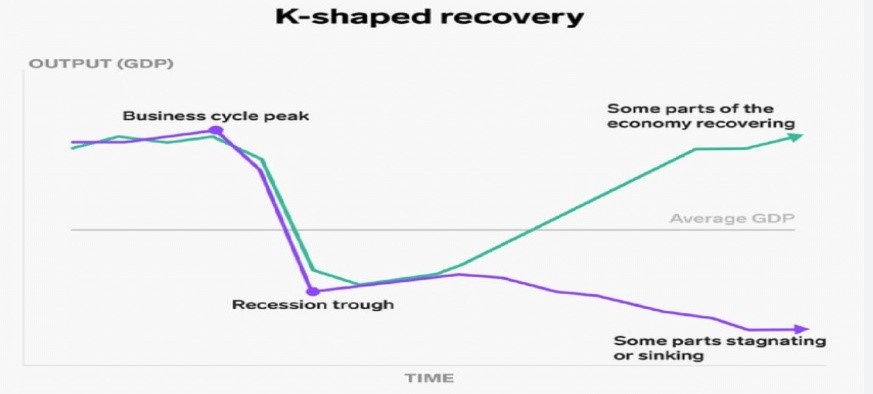2 July 2024 : The Hindu Editorial Analysis
1. Glossing over unemployment, its high electoral price
(Source – The Hindu, International Edition – Page No. – 8)
| Topic: GS3 – Indian Economy – Issues relating to development and employment. |
| Context |
| The article discusses India’s economic challenges, including job creation concerns despite claimed GDP growth, rising inequality, political shifts post-2024 elections, and the need for new economic strategies amid parliamentary dynamics and sectoral issues. |
Indian Economy and Job Creation Challenges
GDP Growth vs. Unemployment
- Despite claiming an impressive 8% GDP growth rate in 2023, the central government has failed to generate sufficient jobs, with over 25 million needed in the next five years.
- Official statistics show a decrease in the unemployment rate from 4.2% in 2021 to 3.1% in 2023, which doesn’t align with the rapid GDP growth.
Political Ramifications
- The 2024 general election outcome reflected dissatisfaction, leading the ruling party to lose its parliamentary majority and form a coalition government with opposing economic ideologies.
Widening Inequality Gap
Wealth Inequality
- Over the past decade, wealth inequality in India has sharply risen, with 1% of the population owning 40% of the country’s wealth.
- This “K-shaped” inequality highlights rising consumption and income for a few, while declining for a large segment of the population.

Economic Management and Criticism
Government Claims vs. Reality
- Government claims of lifting 25 crore people out of poverty through GDP growth are challenged by recent electoral outcomes.
- Doubts persist despite assertions of India being the fastest-growing large economy globally.
Economic Growth Challenges
- The GDP growth of 8.2% in 2023-24, following 7% in the previous year, is attributed to a large budget deficit rather than structural investments.
- Concerns exist over sustaining this growth, with predictions suggesting a potential slip in the coming years.
Need for Economic Overhaul
Calls for Reforms
- Government economists have emphasised the need for “next-generation reforms” to bolster economic growth, now hindered by coalition dynamics and ideological differences.
- The majority of jobs in agriculture, industry, and services remain in the unorganised and informal sectors, posing challenges for formal job creation.
Long-Term Strategy
- India faces a critical need for a new long-term economic strategy amidst political fragmentation and a lack of cohesive policy direction.
- The informal sector dominates job creation, with minimal contributions from the government and formal private sectors.
Conclusion
- The central government’s economic policies face scrutiny amidst political challenges and economic disparities, necessitating a comprehensive strategy for sustainable growth.
- Future economic stability hinges on addressing structural reforms, reducing inequality, and fostering inclusive growth across sectors.
| PYQ: Most of the unemployment in India is structural in nature. Examine the methodology adopted to compute unemployment in the country and suggest improvements. (250 words/15m) (UPSC CSE (M) GS-3 2023) |
| Practice Question: Examine the impact of widening wealth inequality on India’s socio-economic stability and policy formulation. Discuss potential measures to address this disparity and their feasibility in the current political landscape. (250 Words /15 marks) |
2. A tool to ensure complete voter anonymity
(Source – The Hindu, International Edition – Page No. – 9)
| Topic: GS2 – Indian Polity |
| Context |
|
Introduction
- Devesh Chandra Thakur, a candidate of Janata Dal (United) from Sitamarhi Lok Sabha constituency, sparked controversy by stating that he wouldn’t help Muslims and Yadavs who did not support him during elections.
- This statement raised ethical concerns about democratic principles and the role of elected representatives in serving all constituents impartially.
Importance of Voter Secrecy and the Model Code of Conduct
- Voter Secrecy: Rule 56 of the Conduct of Election Rules, 1961, ensures voter secrecy by rejecting marked ballot papers that identify the voter, preventing retribution or rewards based on voting behaviour.
- Model Code of Conduct (MCC): The MCC ensures fair elections by prohibiting statements that divide communities or promise rewards in exchange for votes.
Introduction of Electronic Voting Machines (EVMs)
- EVMs replaced traditional ballot papers but posed challenges like the inability to mix ballot papers from different boxes, which prevented concealing booth-level voting patterns.
Proposal for Totaliser System
- Purpose: The totaliser system was proposed in 2007 to prevent the identification of voting patterns in specific booths, thus safeguarding voter privacy and reducing post-election harassment.
- Development: EVM manufacturers and the Technical Experts Committee of the Election Commission of India (ECI) developed and demonstrated the totaliser system in 2008, receiving political parties’ approval in principle.
Trial and Challenges
- Initial Trials: In 2009, the totaliser system was trialled in bye-elections in Meghalaya and Uttar Pradesh, showcasing its potential benefits.
- Government Response: The government delayed implementing the totaliser despite recommendations from the ECI and the Law Commission of India.
Legal and Political Challenges
- Several writ petitions, sought the implementation of totaliser to preserve voter privacy and prevent intimidation.
- Government and Political Parties: The government’s hesitance and varying political party stances, such as support from parties like the Congress and opposition from others like the BJP, complicated the implementation process.
Debate Surrounding Totaliser Use
- Law Commission’s Support: The Law Commission endorsed the totaliser in its 255th Report, emphasising its role in protecting voter interests.
- Political Parties’ Views: Political parties like BSP, Congress, and NCP supported totaliser use, while others advocated for phased introduction or opposed it outright.
- Issues such as data security and potential leakage from EVMs were raised, affecting the decision-making process.
Current Status and Future Prospects
- As of March 2018, the matter remains unresolved, reflecting ongoing debates on balancing transparency with voter privacy and electoral fairness.
- The discussion continues on whether advancements in technology can mitigate biases and improve electoral processes.
Conclusion
- The debate over implementing the totaliser system underscores broader issues of electoral integrity, voter privacy, and the role of technology in democratic governance.
- Balancing transparency and privacy remains crucial, requiring collaborative efforts between the judiciary, government, and political stakeholders to enhance electoral practices.
| Practice Question: Discuss the ethical implications of elected representatives prioritising support bases over broader constituencies, citing recent controversies. How can such behaviours impact democratic principles and governance effectiveness? (250 Words /15 marks) |




